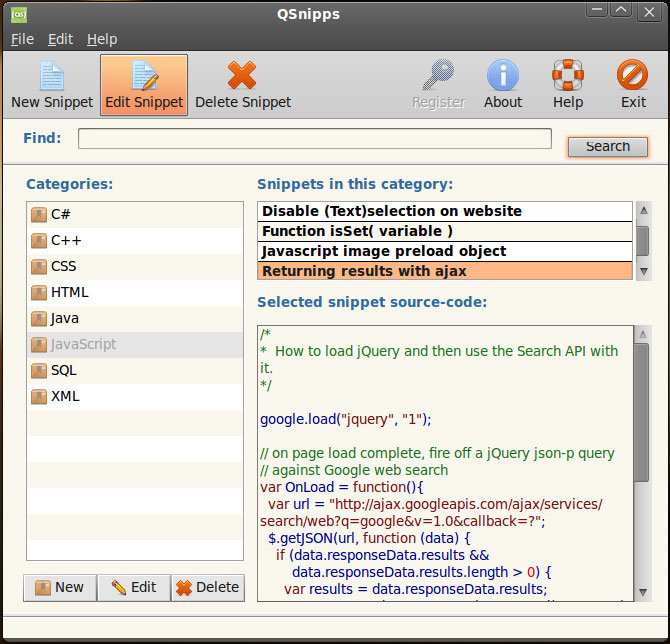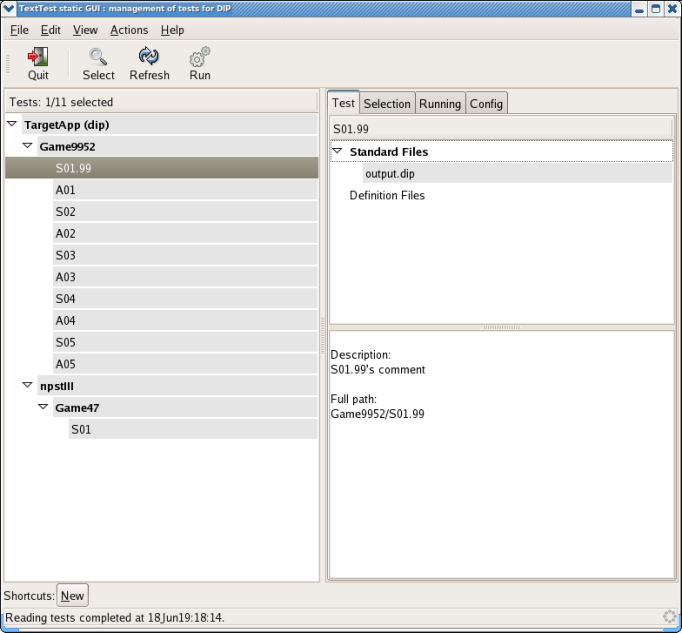PyUseCase is a GUI testing software for PyGTK.
Maintainable GUI testing with a Use Case Recorder
Recording the intent rather than the mechanics
The most natural way to create tests via a user interface is to simply carry out the actions you wish to perform and have a tool that can record them and then reproduce them later. This is a simple and fast way to create GUI tests and there exist many tools that do this.
Most tools couple the tests tightly to the GUI
The problems start when you have a few tests and your GUI changes. Recording may be a great way to create tests but it's a terrible way to maintain large numbers of them. It is error-prone, frustrating and very time-consuming once you have a few tests. The first generation of tools recorded pixel positions and broke as soon as you changed your screen resolution. Today's tools deal in terms of the GUI mechanics: find a table with a certain name and click in the third column of the fourth row. They can survive screen changes and minor re-arrangements of the GUI but not much else. The recorded scripts are dense and don't convey the purpose of the test, and are a closed book to all non-technical people (and sometimes to everyone except the author of the tool).
The problem is essentially one of coupling. The tests and the GUI are tightly coupled to each other and cannot comfortably vary independently of one another. This point is made well by Robert C. Martin in his blog here and his conclusion is that GUI testing is inherently brittle and you should do as little of it as you can get away with.
This seems rather defeatist though. There is huge value in being able to demonstrate what your tests do to a user of the system. If the tests bypass the user interface then that process demands a fair amount of technical skill and a lot of trust from the part of your user. And anyway, software developers solve coupling problems all the time. The answer is, as usual, to introduce another level of indirection.
Breaking the coupling with a UI map
Business people and users generally work in use cases. These are high-level descriptions of a sequence of actions in a language they understand: i.e. that of the domain. The idea of a "Use Case Recorder" is therefore a tool that can record and replay such sequences and thereby capture the intent of the user. This will then allow increased understanding, less dependence on the exact form of the GUI and easier adjustment of existing tests without resorting to clicking all the buttons again.
The basic mechanism is that we maintain a mapping between the actions that can currently be performed with our GUI and statements in this domain language. GUI changes then mean that this single mapping needs to be updated, but the tests can remain untouched, continuing to describe what needs to be done on the conceptual level. This mapping takes the form of an external file in PyUseCase 3.0 and the forthcoming JUseCase 3.0, while in older versions it takes the form of instrumentation in the application code.
Checking the behaviour via logs and TextTest
So our use-case recorder can record and replay usecases for us. But how can we check that what we see on the screen is correct? Most GUI tools do this by allowing the test script to contain "assertions", which look up some widget and check that some property of it is equal to a hardcoded value. This creates yet more dependence on the current GUI layout and cannot be "recorded" in any natural way, but has to be programmed in after the fact. No "usecase" would naturally contain this information : if it did it would turn into a test script.
This discussion isn't on the TextTest site for nothing. If we can only get our application to produce a log of what the GUI looks like we can check what it does by monitoring the contents of that log using TextTest. PyUseCase 3.0 does this for you: it generates an ASCII-art type log of the current GUI appearance and monitors changes to it. The application can supplement it with its own logging as it wishes. With other use-case recorders the application needs to build its own log for this purpose currently.
Synchronising tests by code instrumentation
Almost all GUI testing efforts are plagued by problems with making sure the script waits long enough before proceeding when something happens in the background. The solutions range from arcane ways to wait for some widget to have a certain appearance (yet more dependencies on GUI-mechanics) to "sleep" statements liberally scattered around. Which fail when the system is loaded and cause the tests to run much more slowly than they otherwise would. Anyone without intimate knowledge of the code is ill-equipped to solve such problems, yet doing so is a vital part of writing tests.
Use-case Recorders introduce the concept of an "Application Event". This is basically some instrumentation in the code that indicates to the use-case recorder that something has happened that needs to be waited for, thus allowing the recorder to record and replay waits as well as clicks. These are described in more detail here.
Recording macros as well as tests
High-level, easily manipulated "usecases" are useful for other things than testing. They are also extremely useful for users of the system who can create their own macros for sequences of actions they perform frequently.
These are known as "GUI shortcuts" here. A Use-case recorder will typically allow an application to request a "toolbar" from it which contains controls for recording and replaying them which can be inserted into the application GUI as desired. Besides allowing users to create macros, they can also be used to create even higher level abstractions for the "test language" described above, aiding testers in performing repeated actions to reach a certain screen for testing. These are described in more detail here.
More information can be found on project's home page.
What is new in this release:
- Very basic support for wxPython was added.
- There are also a number of enhancements and bugfixes for PyGTK. Notably, gtk.Dialog.run is now supported without requiring source code changes.
- Python 2.6 and PyGTK 2.12 or later are now required.
- The legacy instrumentation-based interface has been removed.
Requirements:
- Python
- PyGTK
- TextTest



Comments not found